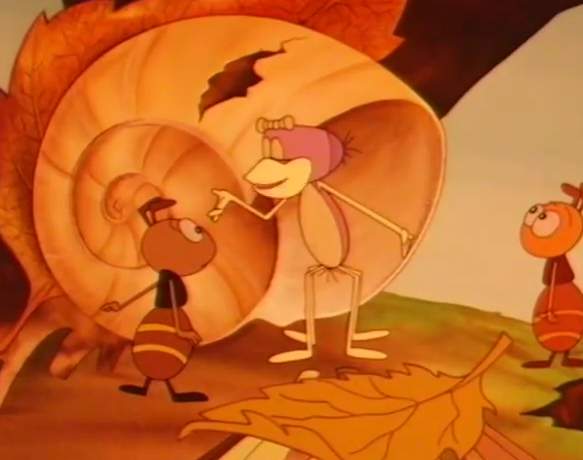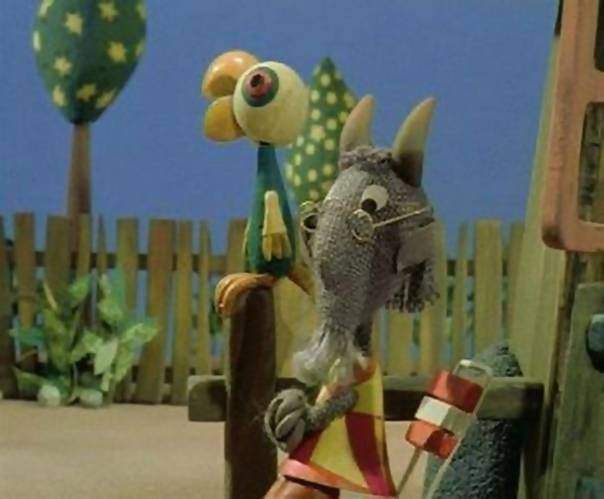Favourite Hungarian cartoons of our childhood – Part 2

There is still a lot to discover as far as Hungarian cartoons are concerned and the 2nd part of this series comes up with further popular cartoons that many of you missed from our previous article. Similarly to the previously mentioned cartoons, the following ones can also wake up nostalgic feelings, and hopefully, you can recall some of your childhood memories, too. Are you ready for a magical journey in the world of cartoons? 🙂
Who would not remember the iconic short cartoon of The Rabbit with Checkered Ears or the adventures of The Little Fox? These stories are very easy to fall in love with and difficult to forget. They are full of characters the appeal of which is enduring to this day and the lesson the cartoons teach is important to keep in mind even today. Still, as an adult, it is a great pleasure to rewatch some of their episodes or familiarise your kids with your beloved childhood cartoons. If you are interested in getting to know more about the ones mentioned above together with Waterspider-Wonderspider, Kukori and Kotkoda, and Mekk Elek, join us in a journey back in time!
1. Waterspider-Wonderspider
The Hungarian cartoon written by György Kertész was put onto the screen by Szabolcs Szabó, József Haui and Csaba Szombati Szabó and was broadcast between 1978-1988. Its main character is Vízipók (Waterspider), the diving bell spider, who lives in an underwater crystal castle. His best friends are the alga-picker sea snails, Ladybird, ants, bees, a bug and a weevil. As Origo.hu reports, the cartoon aimed to familiarise the kids with the world of insects and teach them not to be afraid of these creatures.

The story is about Vízipók, who, unlike other spiders, does not live in dusty corners, but in a magical underwater castle where it spins its web. His friend, the always grumpy and incredulous Cross-Spider, is very much amazed by this fact. However, by getting to know him better, he realises that only because someone is different, he should not make a judgement and Vízipók can be a decent spider. The story became so successful that it was translated into English, German, Czech, Polish and Arabic languages as well.
2. Kukori and Kotkoda
Ágnes Bálint wrote the story of the hen and the cock. As wikipedia.hu reports, the cartoon was inspired by a real-life event, which is the constant complaint of a colleague of the writer claiming that her husband is unwilling to do any kinds of housework. This is how Kukori, the lazy and idle cock, was born who always annoys Kotkoda. Another interesting fact related to the circumstances of the writing process is that the director of the cartoon, János Mata, decided to focus on a hen and a cock as protagonists because the characters have only two legs and therefore, he had to draw less. 🙂

Between 1971-1973, 26 episodes of the cartoon were broadcast. To sum up the simple story, Kukori and Kotkoda live in a happy marriage despite the fact that the laziness of Kukori very much annoys his wife. In fact, the husband only does any kinds of housework with much reluctance, be it weeding or dusting. His friend, Kopasznyakú, helps him avoid household chores, but in the end, the two friends always get the short end of the stick since Kotkoda starts to sermonise her husband.

3. The Rabbit with Checkered Ears
The few-minute-long episodes of the rabbit were written by Veronika Marék and were produced by Zsolt Richly. It was broadcast between 1977-1979, and within a short amount of time, the character became a prolific mascot of Hungarian animation.
In fact, this rabbit is endowed with a special power, which is to utilize its long ears as a propeller to fly in the air.
In each episode, it is always this lovely character who solves the problems by using its supernatural power. Since the series has no spoken dialogues, the episodes did not have to be dubbed. Given this fact and the easily comprehensible story, The Rabbit with Checkered Ears gained much popularity in the nearby countries, too.
Let’s watch an episode, called The Borrowed Stroller!
https://www.youtube.com/watch?v=mNhe7UJUZEs
4. Mekk Elek
The story of Mekk Elek, the handyman, was made in 1973 in the Pannonia Film Studio. It was written by József Romhányi and was directed by István Imre. It consists of 13 episodes.
The funny cartoon is about the handyman goat who pretends to be able to do everything, but in fact, he is not. He has lots of crafts and undertakes some commissions, but after some time, it is revealed that he is unfit for the tasks. His house is decorated with 13 signboards representing the crafts he is supposedly great at and each episode focuses on a different craft.

Although his bungling is obvious, he aggravates the situation with his constant reasoning and his demand for payment that annoys the other animals of the village. In the end, the unsatisfied clients pull down the signboard of the craft on his house in which Mekk Elek turns out to be a bungler. In the last episode, however, to our great surprise, the last signboard, that of the tailor, rests on the house because, in the end, he proves his aptitude for this craft.
5. The Little Fox
The story of the little fox, called Vuk, was based on the novel of István Fekete. The cartoon follows the plotline of the novel to some extent, but in some scenes, it pictures a more delightful situation complemented with further elements. It is compulsory reading in many Hungarian primary schools even today and is regarded as one of the classics of Hungarian animation.
You can watch the English trailer of the film!
The cartoon focuses on the life of Vuk, the little kit of Kag and Íny, who is curious about the world. One day, it ventures away from his family’s den, and by the time he returns, he does not find his parents and brothers there. A human hunter has shot the whole family, and that is why Karak, his uncle, raises him up. Vuk becomes an incredible hunter and is brave enough to visit the yard of the hunter, too. During a hunt, Karak is killed, but Vuk promises to take revenge on the man. Vuk devours the man’s livestock and successfully releases the beautiful vixen captured in a cage. In the end, they live happily ever after with their cubs in the safe cave of Karak.
Unlike the cartoons mentioned above, this one was broadcast as a TV series, composed of four 40-minute long episodes, and as a movie lasting for 74 minutes. Both versions appeared on screen in 1981 while the audience had to wait until 1987 to see the English-language film.
If you are in a mood, while listening to the theme song, you can sing the lyrics provided belove. Have fun! 🙂
https://www.youtube.com/watch?time_continue=55&v=_7R4ZfyMTL0
Lyrics:
Fürge róka lábak,
surranó kis árnyak
Hipp-hopp, jön Vuk!
Híres nagy vadászok,
jobb, ha félreálltok,
Hipp-hopp, jön Vuk!
Ő az éjszakától sohase fél,
Bár a sűrű erdő csupa veszély.
Azt beszélik róla,
ravasz, mint a róka.
Jön, lát, győz, fut!
Felragyog az ég is,
felkiáltok én is:
Hipp-hopp, jön Vuk!
Featured image: meselandia.tv
Source: wikipedia.hu; origo.hu; zeneszoveg.hu





